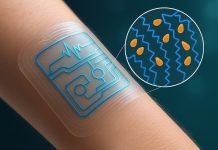
Electrical engineers at Duke University have made a groundbreaking discovery regarding the maximum amount of electromagnetic energy that a transparent material of a certain thickness can absorb.
This breakthrough has significant implications for the design of devices aimed at managing different frequencies of radiation, such as those used in stealth technology or wireless communication.
The research, published in Nanophotonics, marks a rare moment of fundamental insight in the field of electrical engineering.
The study revolves around a challenge that has puzzled scientists for decades: determining the optimal thickness of a material needed to maximize its absorption of electromagnetic energy without compromising its transparency.
Previously, the calculation of maximum light absorption over a range of wavelengths was possible only under specific conditions, such as when one side of the absorbing device was lined with metal.
This metal lining created a definitive boundary that either reflected or absorbed all incoming light, simplifying the mathematical approach to solving the problem.
However, the situation becomes more complex when the absorbing material does not have this metallic boundary and allows light to pass through.
The research team, including Willie Padilla, a professor at Duke, along with research assistant Yang Deng and Vahid Tarokh, the Rhodes Family Professor of Electrical and Computer Engineering at Duke, tackled this complex challenge by devising a new mathematical strategy.
Tarokh’s innovative approach allowed the team to formulate a solution to a problem that had stymied researchers for years. This achievement not only adds a significant piece of knowledge to the field of physics but also opens up practical applications in various technologies.
For instance, devices such as cell phones could potentially use materials optimized to block harmful electromagnetic frequencies while allowing beneficial ones, like GPS or Bluetooth signals, to pass through.
This knowledge enables engineers to understand the limits of their designs and when further optimization might not yield significant improvements.
This discovery at Duke University underscores the importance of theoretical research in advancing practical applications and highlights the ongoing quest for fundamental understanding in the sciences.
The research findings can be found in Nanophotonics.
Copyright © 2024 Knowridge Science Report. All rights reserved.



